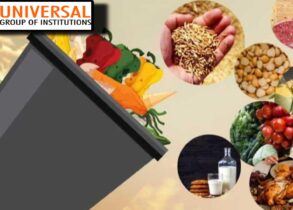National Food Security Act, 2013
Q. Examine how India’s National Food Security Act has affected the fight against hunger and food insecurity. What problems did different states encounter when putting the Act’s provisions into practice? Discuss.
Approach –
- Candidates must answer how India’s food security act has affected efforts to combat malnutrition and food insecurity in this question.
- Write on the difficulties states had implementing this law in the second half of your response.
Introduction-
About two-thirds of the population will receive food grains through the National Food Security Act of 2013. With the passage of this historic law, the welfare model of addressing food security was replaced with a rights-based model.
Body-
The NFSA’s contribution to eradicating hunger and malnutrition
- In India, the number of undernourished people has decreased by 60 million between 2006 and 2019, according to a UN report.
- The outcomes of hunger among the poor and disadvantaged have improved as a result of improved access to dietary grains.
- The poor’s resistance to income shocks has grown due to the 2/3rds of the population being covered.
- According to a UN report, stunting among children under the age of five has dropped from 47.8% in 2012 to 34.7% in 2019.
- Pregnancy-related wage loss has been made up for financially. PWLM now has access to a variety of wholesome foods, including fruits and vegetables.
- From 11.2 million in 2012 to 13.9 million in 2019, more infants were exclusively breastfed because to the awareness raised by the Asha workers.
- For India to achieve nutritional sufficiency, however, there is still a long way to go because:
- In 2019, there will be 175.6 million women of reproductive age who are anaemic, up from 165.6 million in 2012.
- The CNNS has drawn attention to how common hunger and malnutrition are among Indian youngsters.
- From 25.2 million in 2012 to 34.3 million in 2016, there were more obese adults in India.
- Poor institutional infrastructure makes it difficult to implement the food bill’s requirements.
- The advantages have been diverted to middlemen and phantom beneficiaries due to pervasive corruption.
Implementation of NFSA by states –
- The State Ranking Index for NFSA was developed to monitor the application of the NFSA and other reform initiatives across the nation after discussing with states.
- The Index highlights reform efforts by States and UTs, encourages cross-learning, and scales up reform efforts by all States and UTs.
- However, this statistic does not accurately represent the level of hunger, malnutrition, or both in a certain state or union territory.
The Index is built upon three main pillars that run the complete gamut of NFSA implementation from TPDS.
- The NFSA, which assesses the Act’s provisions relating to coverage, targeting, and compliance, is the first pillar.
- The second pillar investigates the delivery system, taking into consideration food distribution, transportation, and last-mile delivery to Fair Price Shops (FPS).
- The department’s involvement in nutrition-related activities is the subject of the third and last pillar.
- The efficient implementation of the NFSA is still the responsibility of the states and UTs, and since state governance varies from one state to the next, so will each state’s effectiveness.
Challenges states faced while implementing NFSA-
- Lack of Transparency: A 2016 audit by the Comptroller and Auditor General (CAG) found that the NFSA was being misused by the wrong individuals.
- It charges numerous states with enforcing the NFSA despite knowing that their beneficiary list is fictitious.
- Food grains may leak from the PDS if they do not reach the intended recipients. There are three different sorts of leakages that can occur: theft of food grains during transit; diversion to non-recipients at fair pricing shops; and omission of eligible beneficiaries from the list.
- Storage: The CAG audit found that the amount of food grains that were allotted had insufficient room for storage.
- People frequently remark that the quality of food grains is subpar and that they sometimes need to be combined with other grains in order to be edible. There have also been complaints made that the grains contain pebbles and other non-food items.
Ways to increase the effectiveness of NFSA-
- The usage of Information Technology throughout the process from acquisition of the food grains to distribution will aid in enhancing the effectiveness of the process.
- For example, in January 2021, the DigiLocker facility has been advocated for adoption in the PDS. This is to help make e-ration cards accessible for the beneficiaries anytime from anywhere under the One National One Ration Card Scheme.
Conclusion-
Food bill has revolutionized the access to food grains; however, the need is to move towards nutritional security and not just food security. Further the structural bottlenecks in the implementation food bill should be corrected by leverage of technology.









